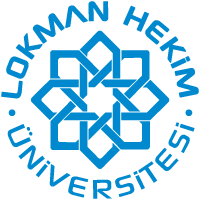| dc.contributor.author | Olgar, Yusuf | |
| dc.contributor.author | Durak, Aysegul | |
| dc.contributor.author | Bitirim, Ceylan V | |
| dc.contributor.author | Tuncay, Erkan | |
| dc.contributor.author | Turan, Belma | |
| dc.date.accessioned | 2021-12-10T13:04:36Z | |
| dc.date.available | 2021-12-10T13:04:36Z | |
| dc.date.issued | 2021-10-10 | |
| dc.identifier.other | 34632595 | |
| dc.identifier.uri | http://hdl.handle.net/20.500.12591/701 | |
| dc.description.abstract | Insufficient-heart function is associated with myocardial insulin resistance in the elderly, particularly associated with long-QT, in a dependency on dysfunctional KCNQ1/KCNE1-channels. So, we aimed to examine the contribution of alterations in KCNQ1/KCNE1-current (I ) to the aging-related remodeling of the heart as well as the role of insulin treatment on I in the aged rats. Prolonged late-phase action potential (AP) repolarization of ventricular cardiomyocytes from insulin-resistant 24-month-old rats was significantly reversed by in vitro treatment of insulin or PKG inhibitor (in vivo, as well) via recovery in depressed I . Although the protein level of either KCNQ1 or KCNE1 in cardiomyocytes was not affected with aging, PKG level was significantly increased in those cells. The inhibited I in β -ARs-stimulated cells could be reversed with a PKG inhibitor, indicating the correlation between PKG-activation and β -ARs activation. Furthermore, in vivo treatment of aged rats, characterized by β -ARs activation, with either insulin or a PKG inhibitor for 2 weeks provided significant recoveries in I , prolonged late phases of APs, prolonged QT-intervals, and low heart rates without no effect on insulin resistance. In vivo insulin treatment provided also significant recovery in increased PKG and decreased PIP2 level, without the insulin effect on the KCNQ1 level in β -ARs overexpressed cells. The inhibition of I in aged-rat cardiomyocytes seems to be associated with activated β -ARs dependent remodeling in the interaction between KCNQ1 and KCNE1. Significant recoveries in ventricular-repolarization of insulin-treated aged cardiomyocytes via recovery in I strongly emphasize two important issues: (1) I can be a novel target in aging-associated remodeling in the heart and insulin may be a cardioprotective agent in the maintenance of normal heart function during the aging process. (2) This study is one of the first to demonstrate insulin's benefits on long-QT in insulin-resistant aged rats by accelerating the ventricular AP repolarization through reversing the depressed I via affecting the β -ARs signaling pathway and particularly affecting activated PKG. | en_US |
| dc.language.iso | eng | en_US |
| dc.publisher | Tıp Fakültesi | en_US |
| dc.rights | info:eu-repo/semantics/openAccess | en_US |
| dc.rights | Attribution-NonCommercial-NoDerivs 3.0 United States | * |
| dc.rights.uri | http://creativecommons.org/licenses/by-nc-nd/3.0/us/ | * |
| dc.subject | ATP dependent K+-channels | en_US |
| dc.subject | cardiomyocytes | en_US |
| dc.subject | electrical activity | en_US |
| dc.subject | heart dysfunction | en_US |
| dc.subject | insulin resistance | en_US |
| dc.subject | intracellular ionic homeostasis | en_US |
| dc.subject | voltage-dependent ionic channels | en_US |
| dc.title | Insulin acts as an atypical KCNQ1/KCNE1-current activator and reverses long QT in insulin-resistant aged rats by accelerating the ventricular action potential repolarization through affecting the β -adrenergic receptor signaling pathway. | en_US |
| dc.type | info:eu-repo/semantics/article | en_US |
| dc.contributor.department | Temel Tıp Bilimleri | en_US |















